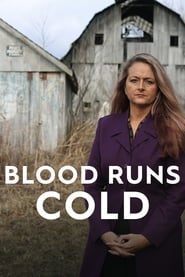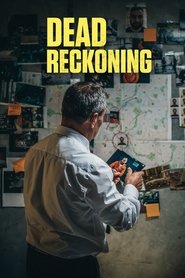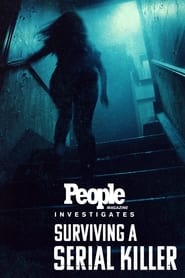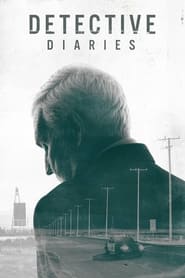Investigation Discovery TV Series - Page 9
-
Murder by Numbers
2017
star 8.5Each episode of this true-crime series begins with the grisly discovery of a body and the onset of an intense investigation. When police think they've solved the case, shocking twists sends each investigation into the depths of evil. -
The Lies That Bind
2019
star 9.4Stories of murder investigations that gradually exposed one truth after another, revealing the sinister underbelly beneath seemingly placid communities. -
Pamela Smart: An American Murder Mystery
2018
star 6.3Sex, lies and a tale too twisted to be real surround the murder of Gregg Smart. Who Killed Him? And why? On May 1, 1990, 22-year-old teacher Pamela Smart finds her husband Gregg dead on the floor of their southern New Hampshire condo, leaving the town of Derry stunned. Scouring the region for clues, police shift their attention to Gregg's grieving widow, Pamela Smart, who has been making curious television appearances publicizing her plight. When investigators discover Pamela has been having a sordid affair with high school student, Billy Flynn, a complicated web of lies and deceit unravel, revealing one of the most scandalous crimes of the century. Now, leading true crime network Investigation Discovery (ID) delves into the case in Pamela Smart: An American Murder Mystery. From the tawdry affair, to teenage assassins, to the explosive nationally televised trial, this case transfixed the entire nation as Pamela Smart emerged as the original Black Widow. -
Deadly Women: Fatal Instincts
2022
Crime experts explore the motives and modus operandi of female killers. While males are often driven by anger, impulse and destruction, women usually have more complex, long-term reasons to kill. -
Killing Time
2019
star 7Crime-mystery series that zeroes in on a critical, lost gap of time during the day of a homicide. Once that gap's pieced back together, it breaks the case wide open. -
Cry Wolfe
2014
Cry Wolfe
2014
Cry Wolfe combines the work of veteran private eye Brian Wolfe and Investigation Discovery's signature dramatizations to create a hybrid reality/procedural-crime series. It's inspired by actual cases investigated by Wolfe and his assistant, Janine McCarthy, and whether the target is a cheating spouse, dishonest employee, or scammer, each half-hour episode follows the two from the initial client consultation to evidence-gathering stages and finally a confrontation with the accused. Wolfe, a no-nonsense guy with a thick Boston brogue, conducts field work using an arsenal of tried-and-true P.I. tricks; McCarthy picks up the data trail left on the Internet; and re-enactments give each case life, disclosing a shadowy world where things aren't always as they seem. -
Good Cop, Bad Cop
2023
star 7Investigating a murder is hard enough. But when detectives realize the killer knows how to stage a crime scene to throw them off, the job gets even more difficult. They’re hunting down criminals who are sworn to protect and serve -- killers with a badge. -
Beauty Queen Murders
2013
star 5.5Beauty pageants are the stuff of dreams for so many girls who fantasize about being a princess for the day. For these beauty queens, a sash and crown may empower them to reach for the stars but it can't defend against the terrible fate that awaits. BEAUTY QUEEN MURDERS shines the spotlight on women who lived their lives in the public eye as America's sweethearts. They were all so young. They were all so beautiful. They all held so much promise. And they were all killed before their limelight was up. -
Blood Runs Cold
2018
Blood Runs Cold
2018
Blood Runs Cold tells astonishing stories of individuals who went to unimaginable lengths to uncover the truth and to bring justice for heinous crimes that have long since gone cold. These are cases of murder and disappearance that took years, if not decades, to solve. -
The Real Murders on Elm Street
2024
star 6Explore true stories of real murders on Elm Streets across the county — proving that horror happens everywhere, things do go bump in the night, and no one is safe. -
Impact of Murder
2019
star 10In "Impact of Murder," Investigation Discovery uses the victim impact statement as a storytelling device. These statements are delivered in court allowing a family member or friend to describe the impact of a crime. They are a source of strength for those who feel helpless in the face of a senseless crime, and they help crime victims recover from the collateral damage inflicted, giving them a sense of power as they stand up in court to address the perpetrator. Through the victim's words, viewers come to understand the emotional damage endured as well as the significance of the life that was taken. -
People Magazine Presents: Crimes of the 90s
2022
star 10People Magazine goes beyond the headlines by walking through each year of the 1990s to put a spotlight on the most intriguing and chilling crimes of the decade. Each dramatic and gripping episode reveals the true narrative behind some of the most notorious stories, from Mary Kay Letourneau's scandalous affair with a 14-year-old to the disappearance of JonBenét Ramsey. Revisiting these high-profile cases years later gives people the opportunity to grapple with lingering questions, including what was done right, what could have been done better and what is still left unanswered. -
Dead Reckoning
2020
star 7Solving a murder is like putting together a giant jigsaw puzzle. Sometimes, the pieces snap into place with ease and other times, they don't fit. The police must meticulously reconstruct the puzzle. Once all the pieces are found, investigators must then figure out how everything fits together, crack the case and bring justice for the victim. -
Before They Kill Again
2024
star 7Sometimes, the only way to stop a madman before he kills again is to get inside the mind of a monster and think like he does. Cops go head-to-head with the most dangerous and deadly criminals in one-on-one battles of wits, only one of them will win. -
The Tetris Murders
2022
star 6.3September 22, 1998, Vladimir Pokhilko, who was involved with the development of TETRIS, was found dead alongside his wife and their young son in their Palo Alto, California, home. Now, more than two decades later, the Palo Alto Police Department homicide investigators who were first on the scene revisit the haunting crime. What was once thought to be a murder-suicide in 1998 is now revealed to be something much more sinister. -
Does Murder Sleep
2023
star 6When we sleep, we are at our most vulnerable. Sometimes crimes occur when a few or even all key characters are fast asleep. These stories tap into the primal fear, present since childhood, of what happens once we shut our eyes. -
People Magazine Investigates: Surviving a Serial Killer
2024
star 8There are precious few individuals who have managed to survive their encounters with serial killers. Anchored by People Magazine's in-depth reporting, these survivors share their terrifying and intensely emotional experiences with unimaginable evil. -
The Atlanta Child Murders
2019
star 6.4While touting itself as a mecca for progressive expansion, early 1980s Atlanta has a dark secret. Over two years, at least twenty-nine black children, teens, and young adults have been systematically abducted and murdered from low income neighborhoods. As the mothers of the victims beg law enforcement to take action, the investigation languishes while the country looks on. Suspects include the KKK, the police and known pedophiles. The nightmare is seemingly over when Wayne Williams, a young black man, is arrested and the majority of the crimes are attributed to him. But was he simply a scapegoat? In this 3-part special we explore the case from those closest to it while highlighting the enduring questions surrounding this tragic chapter in Atlanta's history. -
Detective Diaries
2021
star 8.5This series takes us inside the investigative minds of five American detectives as they reexamine the harrowing cases that defined their careers. From hunting killers who hid in the shadows for decades, to taking on a political machine with more than blood on its hands, to reliving the same murder through three different victims in a row, every crime turns the story back on each detective, triggering memories of painstaking investigations, forcing them to come to terms with old wounds, and revealing what drives them to stand strong in the fight for justice.



















